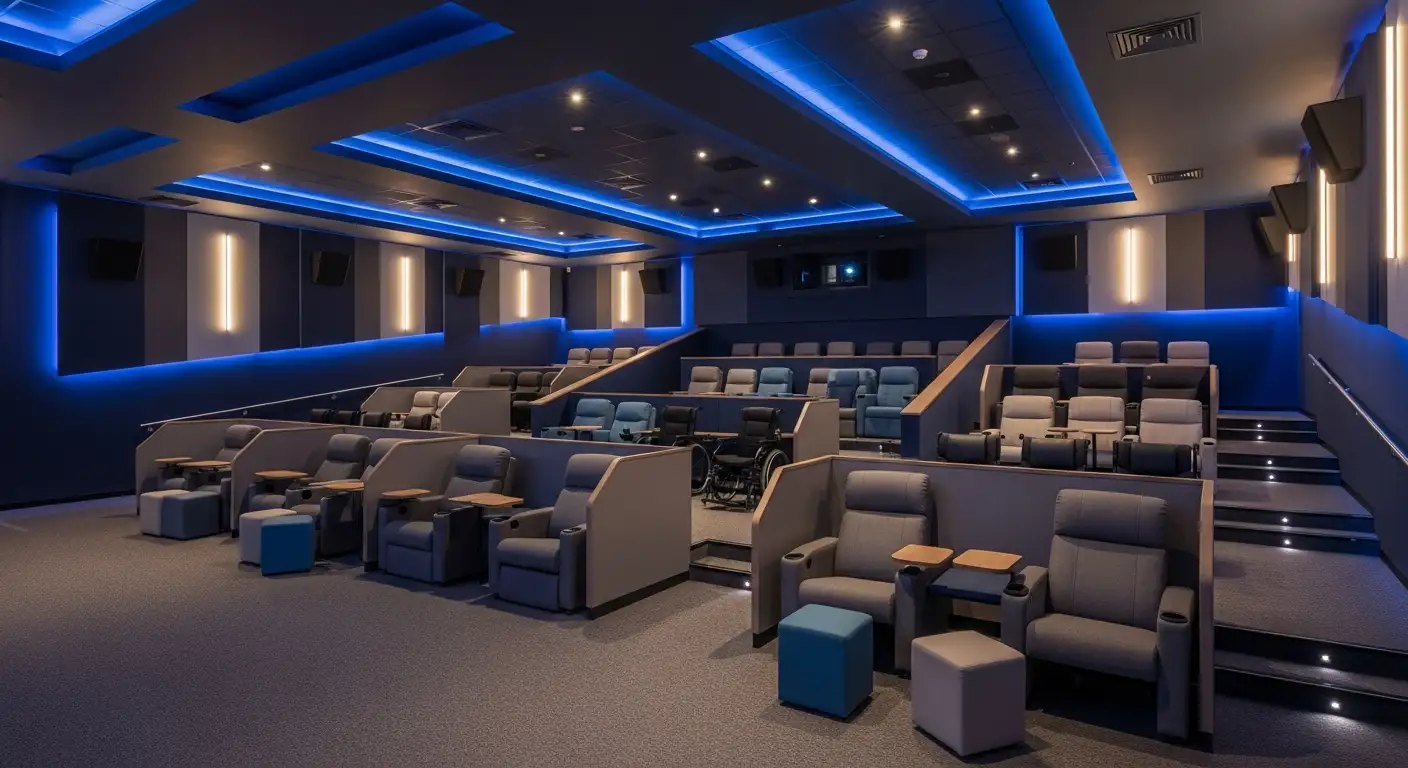The Benefits of Drama Therapy for Autistic Individuals
Unlocking Potential: How Drama Therapy Empowers Autistic Individuals

Why Drama Therapy Matters for Autism
Drama therapy, blending theatrical arts with psychotherapy, offers a promising avenue to support autistic individuals in developing social, emotional, and behavioral skills. This therapeutic approach uses creative methods like role-play, storytelling, and improvisation, all aimed at fostering self-expression and social engagement. Emerging research and clinical practice reveal that drama therapy can significantly enhance the lives of those on the autism spectrum by building communication abilities, emotional regulation, and social understanding.
Historical Roots and Foundations of Drama Therapy in Autism Support
How has drama therapy historically been used to support autistic individuals?
Drama therapy and theatrical techniques have long been employed to support children with autism and communication challenges. These methods have a solid historical foundation in enhancing social skills and offering therapeutic benefits for various emotional and social difficulties. The use of theatre as a form of intervention highlights its significant role in improving social functioning among these populations.
Historical use of drama therapy in autism
Early practices evolved from general dramatherapy—psychotherapy utilizing drama arts such as storytelling, role-playing, movement, and improvisation—to programs specifically aimed at children with autism spectrum disorder (ASD). These interventions focus on promoting social awareness, emotional expression, and behavioral adaptation through engaging, creative techniques.
Theatrical techniques in social skills development
Therapeutic programs integrate methods like peer modeling, video modeling, and community theatrical productions to cultivate perspective-taking and social perception skills. For example, programs such as the SENSE Theatre intervention use these strategies to improve critical social cognition areas, including face identification and theory of mind.
Background of dramatherapy practices
Dramatherapy is delivered by clinically trained dramatherapists, providing structured and purposeful sessions that foster personal growth and emotional well-being. It serves as a supportive medium to build therapeutic relationships and encourage processing of feelings while practicing positive social interactions. This formalized approach to therapy combines creative arts with psychological principles to promote holistic development in autistic individuals.
Core Techniques of Drama Therapy and Their Therapeutic Role
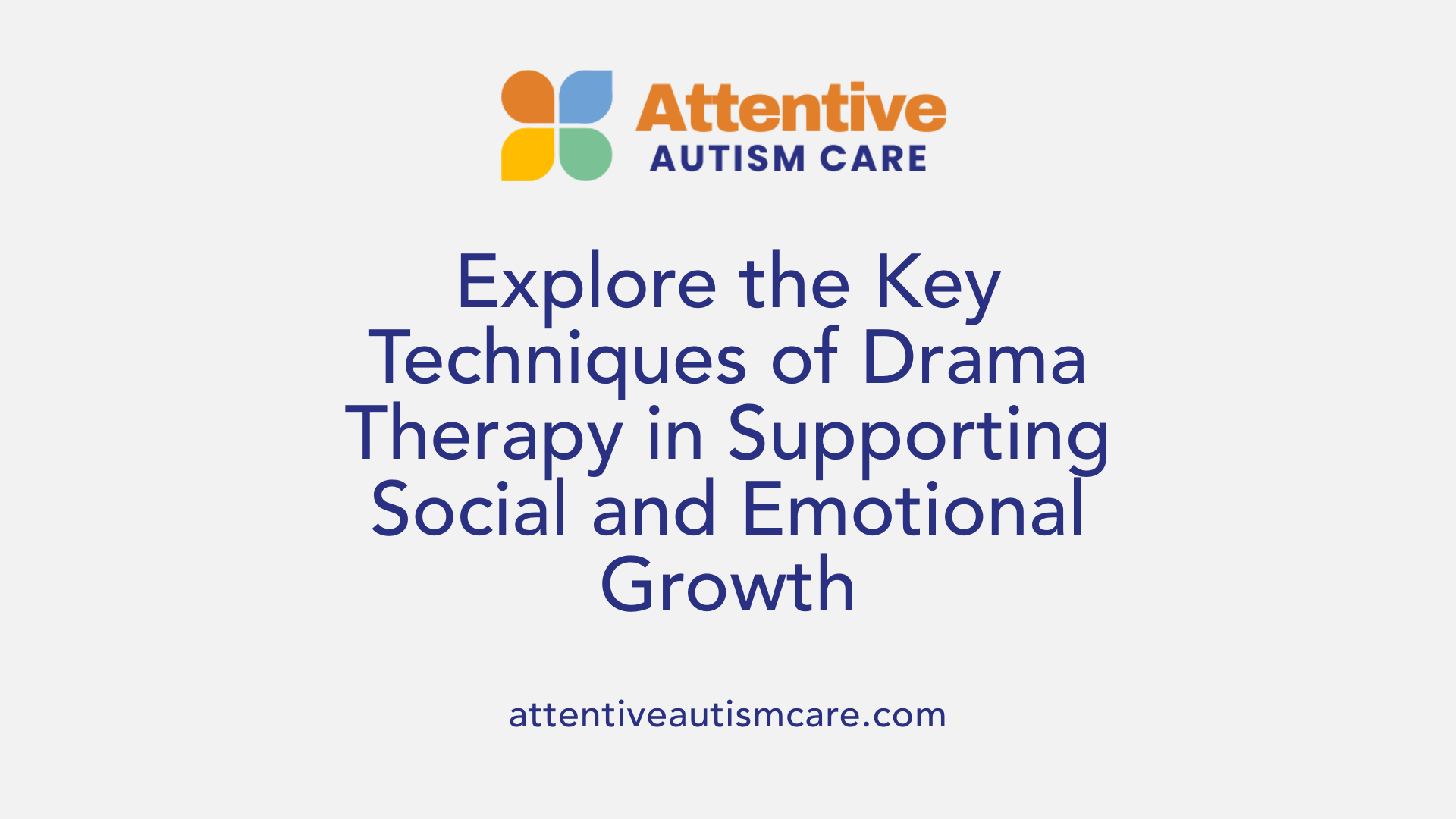
What techniques does drama therapy use to support emotional and social development?
Drama therapy uses a range of theatrical arts to support emotional and social growth, especially in children and adolescents with autism spectrum disorder (ASD). Key techniques include role-play, improvisation, storytelling, dramatisation, and movement.
These methods serve several therapeutic purposes:
- Role-play allows participants to act out different scenarios, helping them explore emotions and social interactions in a safe, controlled environment.
- Improvisation encourages spontaneity and adaptability, fostering creative expression and enhancing problem-solving skills.
- Storytelling provides a framework for individuals to articulate their experiences and feelings, promoting emotional processing.
- Dramatisation and movement engage the body and mind, supporting self-awareness and nonverbal communication.
Within therapy sessions, these techniques are used strategically to build strong therapeutic relationships. By engaging participants through familiar and imaginative activities, therapists can facilitate trust and openness. This engagement creates a supportive space where individuals feel comfortable sharing thoughts and feelings.
The active participation in theatrical arts also encourages new behaviors and perspectives, helping individuals develop social skills and emotional regulation. Specifically, this approach has shown promise in promoting interaction, symbolic play, and emotional responsiveness among children and adolescents with ASD.
Overall, drama therapy harnesses the power of theatre to transform therapy into an accessible and dynamic experience that supports emotional and social development effectively.
SENSE Theatre: A Model Integrating Drama Therapy and Behavioral Strategies
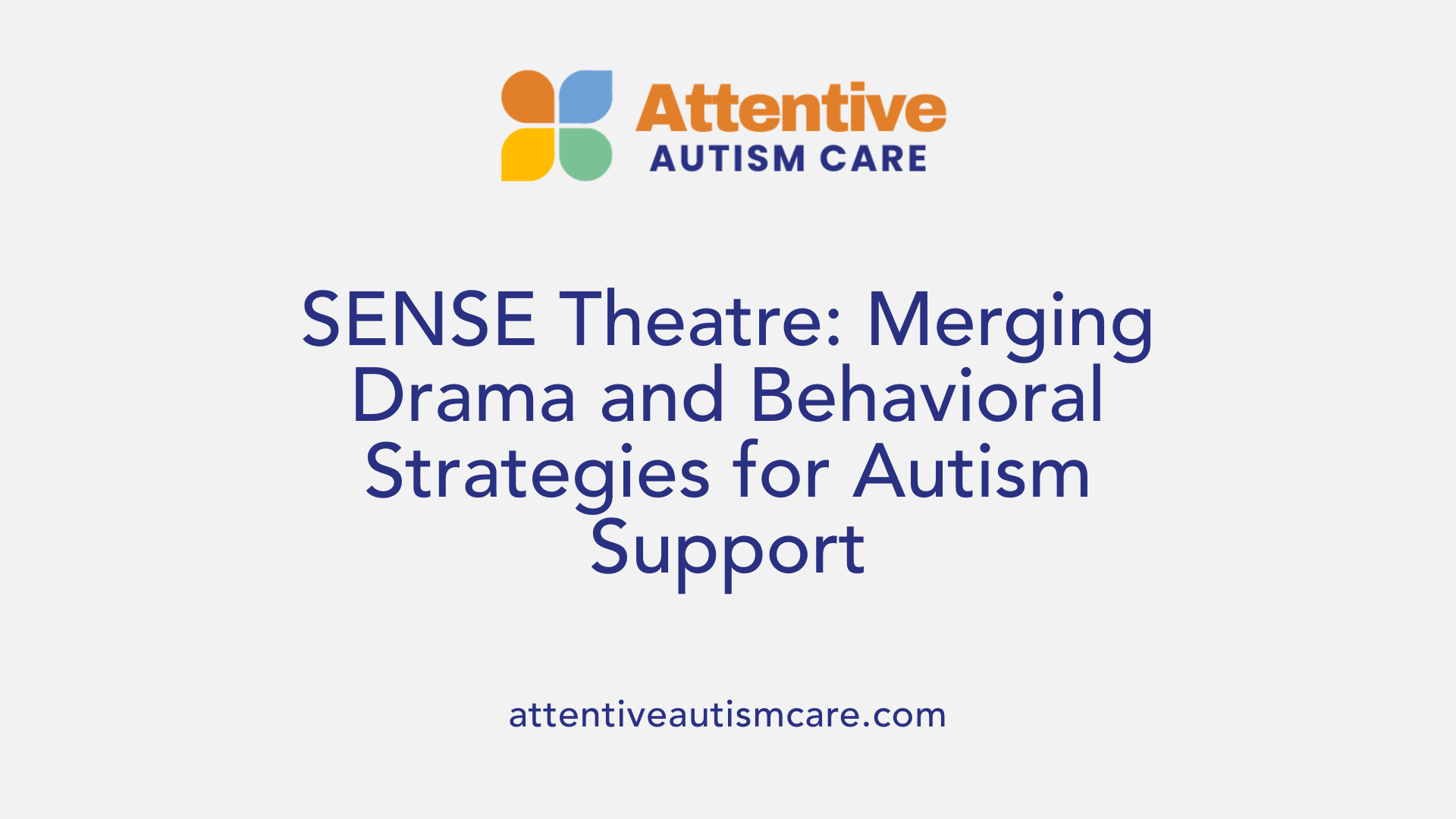
What is the SENSE Theatre intervention and how does it help autistic children?
The SENSE Theatre intervention is a therapeutic approach that blends drama therapy techniques with behavioral methods to support social development in children with autism spectrum disorder (ASD). This program incorporates theatrical methods alongside peer modeling, video modeling, and community-based theatre production.
Components of the SENSE Theatre Intervention
The intervention includes:
- Theatrical methods: Using role-play, dramatization, and improvisation to engage children creatively.
- Peer modeling: Children observe and interact with trained peers who demonstrate social behaviors.
- Video modeling: Visual examples of social interactions used as learning tools.
- Community-based theatre production: A setting that fosters real-life social engagement and practice.
Integration of Peer and Video Modeling
Peer and video modeling are central to SENSE Theatre, providing children with accessible, relatable demonstrations of social cues and interactions. These strategies promote social awareness, perspective-taking, and the development of theory of mind, helping children recognize faces and understand others’ thoughts and feelings.
Impact of Community-Based Theatrical Settings
The immersive nature of community theatre offers naturalistic social environments where children can practice skills in context. Participation in SENSE Theatre has also been linked to a reduction in biological stress, as shown by lowered cortisol levels, indicating increased comfort and habituation to social situations.
By combining creative arts with evidence-based behavioral techniques, SENSE Theatre offers a promising model for enhancing social functioning and emotional well-being in autistic children.
Social Skills Development Through Drama Therapy
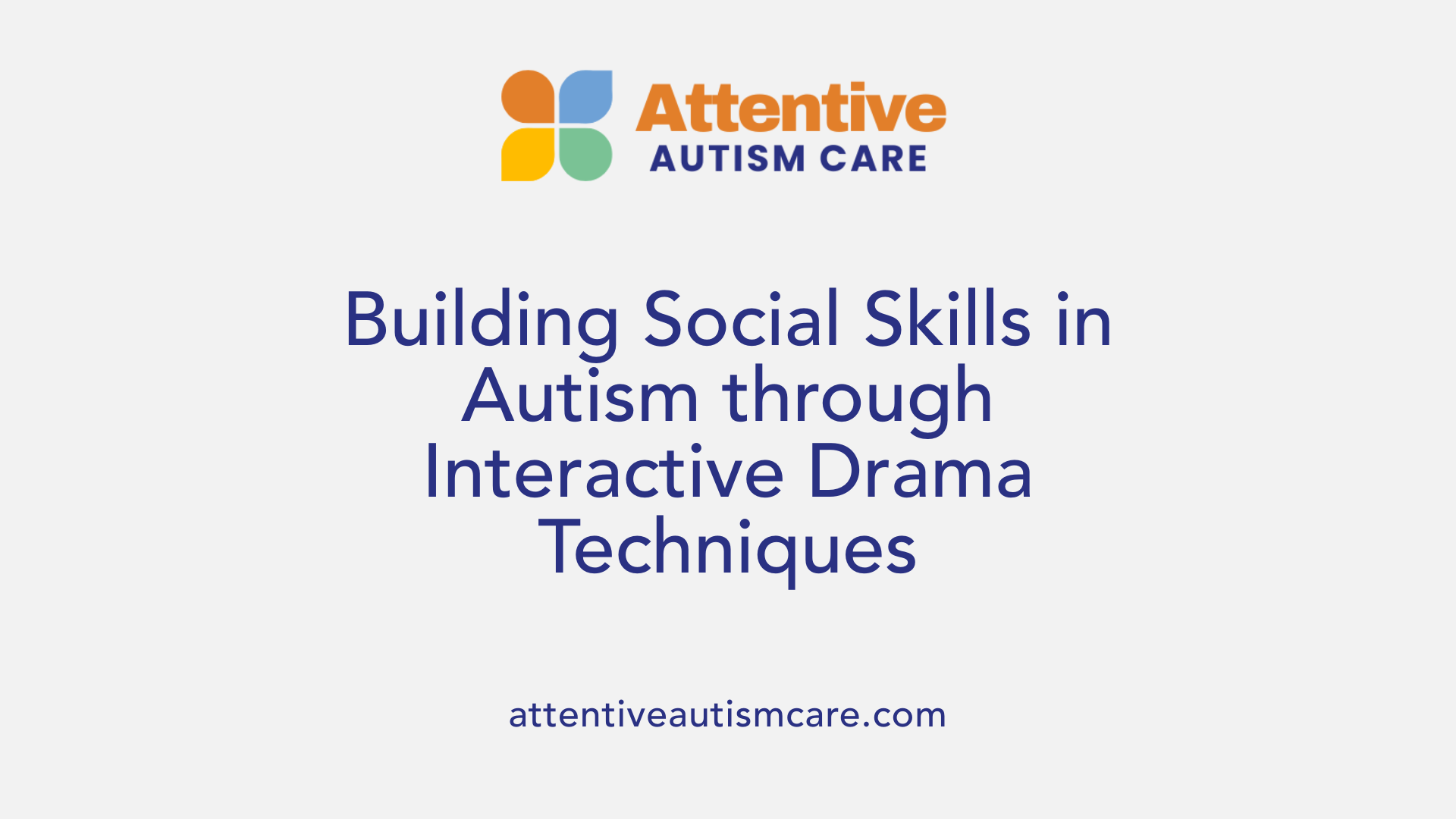
How does drama therapy improve social skills in autistic individuals?
Drama therapy enhances social skills by immersing autistic individuals in interactive theatrical activities that promote social perception and engagement. Through techniques such as role-play, improvisation, and storytelling, participants are encouraged to explore and practice social behaviors in a supportive environment.
Improvement in social perception
Programs like SENSE Theatre combine theatrical methods with peer and video modeling to strengthen abilities like face identification and theory of mind—essential components of social perception. This intervention has demonstrated measurable gains in how children with autism spectrum disorder (ASD) interpret and respond to social cues.
Perspective taking and social awareness
By using a community-based theatrical setting, drama therapy supports perspective taking and social awareness. Exposure to varied social roles and scenarios enables children to better understand others’ viewpoints and emotions, contributing to enhanced social functioning.
Use of peer models in therapy
Incorporating peer models—a strategy where typically developing peers participate alongside autistic children—helps normalize social interactions and provides relatable examples of social behaviors. Along with video and behavioral modeling, this approach promotes comfort in social settings, often linked to reductions in stress responses during social engagement.
Collectively, these methods create a dynamic platform for autistic individuals to develop essential social skills, improve emotional regulation, and foster meaningful connections with others.
Emotional Regulation and Stress Reduction via Drama Therapy
How Does Drama Therapy Reduce Stress in Autistic Individuals?
Participation in drama therapy has been shown to reduce cortisol levels in autistic children over time. Cortisol is a hormone associated with stress, and its decrease suggests that drama therapy may help lower biological stress responses. This reduction is likely the result of habituation—where repeated exposure to social environments through theatrical activities increases comfort and familiarity, making social interactions less stressful.
In What Ways Does Drama Therapy Enhance Emotional Well-Being?
Drama therapy fosters emotional well-being by providing a safe and creative space for self-expression. Techniques such as role-play, improvisation, and storytelling enable individuals to explore and process their emotions in a supportive setting. These activities promote emotional regulation by encouraging participants to recognize, express, and manage their feelings effectively.
How Does Drama Therapy Support Habituation to Social Environments?
Through community-based theatrical settings and the use of peer and video modeling, drama therapy offers repeated, structured social experiences. This helps autistic individuals gradually become more comfortable with social cues and interactions. Over time, this habituation process aids in reducing anxiety and improving social confidence.
Drama therapy, practiced by trained professionals, integrates artistic elements that impact affect, memory, and social engagement. The combined effects of storytelling, movement, and symbolic play contribute to socioemotional improvements. These benefits emphasize drama therapy's role as a therapeutic tool not only for communication and social skills but also for emotional regulation and stress reduction in autistic individuals.
Enhancing Socioemotional Functioning Through Artistic Elements
How do music and theatrical activities influence socioemotional functioning in autistic individuals?
Music and theatrical activities play a significant role in supporting affect, memory, and social engagement among autistic individuals. These artistic elements serve as powerful tools within drama therapy, helping participants access and express emotions in a more relaxed, creative environment.
Through music and theatre, individuals can experience enhanced emotional regulation, which contributes to improved interactions and engagement with others. For example, the rhythmic and melodic aspects of music can influence mood and memory recall, while theatrical enactments like role-play help in understanding and responding to social cues.
Role of artistic activities in social engagement
Artistic activities often encourage active participation and cooperation, fostering stronger social connections. Drama therapy sessions use storytelling, improvisation, and dramatization to stimulate imagination and perspective taking, crucial for social awareness.
Community-based theatrical settings and peer modeling used in interventions such as the SENSE Theatre provide supportive contexts where individuals can practice social behaviors comfortably, reducing stress and biological responses to social interaction over time.
Multiple factors contributing to therapy success
The success of drama therapy in improving socioemotional functioning stems from multiple intertwined factors. Incorporating music, theatrical techniques, peer and video modeling, and community engagement creates a rich therapeutic environment that helps build social skills, emotional well-being, and cognitive understanding.
This multifaceted approach not only nurtures behavioral and expressive capabilities but also supports memory and emotional processing. Each element complements the others, resulting in more effective outcomes for children and adolescents with autism under dramatherapy care.
Dramatherapy’s Role in Behavioral and Expressive Skill Development
What behavioral and expressive benefits does dramatherapy provide to children and adolescents with ASD?
Dramatherapy is a specialized form of psychotherapy that uses theatrical arts like role-playing, storytelling, improvisation, and dramatisation to promote behavioral and emotional growth. For children and adolescents with autism spectrum disorder (ASD), it offers a unique, creative outlet to build and enhance a variety of skills.
One of the primary benefits of dramatherapy is its ability to foster behavioral skills. Through guided sessions, participants engage in role-play and dramatization, which help them explore social situations and practice appropriate responses in a safe environment. This hands-on experience encourages adaptive behaviors and strengthens social interaction abilities.
In addition to behavioral improvements, dramatherapy enhances expressive and social skills. By participating in activities such as storytelling and improvisation, young individuals learn to communicate thoughts and emotions more effectively. This promotes greater engagement with peers and nurtures symbolic play, which is essential for developmental progress in children with ASD.
Emotional well-being also sees positive impacts from dramatherapy. The therapeutic use of theatre arts provides a channel for participants to process feelings and develop emotional regulation. Building therapeutic relationships during these sessions further supports mental health and social connectedness.
Overall, dramatherapy combines artistic expression with structured intervention techniques, creating a supportive and enjoyable space for children and adolescents with ASD to grow emotionally, socially, and behaviorally.
Research Evidence Supporting Drama Therapy Effectiveness in Autism
What does research reveal about the effectiveness of drama therapy for autistic individuals?
Research on drama therapy for children and adolescents with Autism Spectrum Disorder (ASD) reveals promising benefits. A systematic review that examined nine studies—including qualitative, quantitative, and mixed methods—found that drama therapy fosters interaction, engagement, symbolic play, and emotional response among young individuals with ASD.
These studies highlight how techniques such as role-play, storytelling, improvisation, and dramatization help build therapeutic relationships, encourage new behaviors, and support emotional well-being and social skills development. For example, drama therapy methods promote behavioral and expressive skills while facilitating processing of thoughts and feelings.
However, the review also emphasizes important methodological limitations within the current research. Many existing studies lack standardized outcome measures and formalized approaches to evaluating efficacy. Because of this, there is a clear need for more rigorous research designs and assessment tools to better establish the effectiveness of drama therapy programs in autism interventions.
Overall, while evidence supports drama therapy as a valuable, creative, and engaging therapeutic approach for autistic individuals, further well-designed studies are necessary to validate and optimize its use in clinical and educational settings.
Integrating Drama Therapy into Comprehensive Autism Treatment Plans

How is drama therapy incorporated within broader behavioral treatment frameworks for autism?
Therapists specializing in autism frequently include drama therapy in their overall behavioral treatment plans. By integrating techniques such as role-play, storytelling, and improvisation, these professionals enhance communication skills, improve social engagement, and support emotional expression among autistic individuals.
Drama therapy serves as a creative and engaging medium within behavioral analysis and intervention strategies. It allows therapists to observe and analyze behaviors in dynamic, meaningful contexts while providing participants opportunities to practice new social and emotional responses.
This approach complements traditional behavioral therapies by adding artistic components that foster motivation and participation. Strategies like peer modeling, video modeling, and community-based theatrical settings, as seen in interventions like SENSE Theatre, demonstrate how drama-based methods contribute to social awareness and perspective taking.
Overall, drama therapy's unique blend of artistic expression and therapeutic goals makes it a valuable part of comprehensive autism treatment programs, promoting not only skill development but also emotional well-being and reduced stress in social settings.
The Importance of Qualified Dramatherapists in Autism Care
Who Delivers Drama Therapy and What Qualifications Do They Have?
Drama therapy is administered by qualified and clinically trained dramatherapists. These professionals have specialized education and training that equip them to use drama and theatre arts such as storytelling, role-playing, movement, and improvisation deliberately for therapeutic goals. Their expertise allows them to adapt interventions to the emotional, psychological, and social needs of individuals, including children and adolescents with autism spectrum disorder (ASD).
Role in Emotional and Social Support
Qualified dramatherapists play a crucial role in supporting emotional and social development. They use theatrical techniques not just for creative expression but to foster skills like social interaction, emotional regulation, and perspective-taking. Through dramatherapy, autistic participants engage in activities that promote behavioral and expressive skills, build therapeutic relationships, and encourage new social behaviors in a safe and supportive environment.
Standards and Practices in Dramatherapy Delivery
Effective dramatherapy requires adherence to clinical standards and evidence-based practices. Qualified dramatherapists conduct sessions that are carefully structured and responsive to individual therapeutic needs. They incorporate techniques such as role-play and improvisation to facilitate processing thoughts and feelings, while also promoting adaptation and self-development. Despite positive outcomes reported in various studies, the field recognizes the need for more formalized assessment methods to ensure consistent quality and efficacy in dramatherapy for ASD.
Overall, the clinical training and professional expertise of dramatherapists are vital for delivering drama therapy interventions that truly benefit individuals with autism, addressing complex emotional and social challenges in a creative and engaging manner.
Challenges and Future Directions in Drama Therapy for Autism
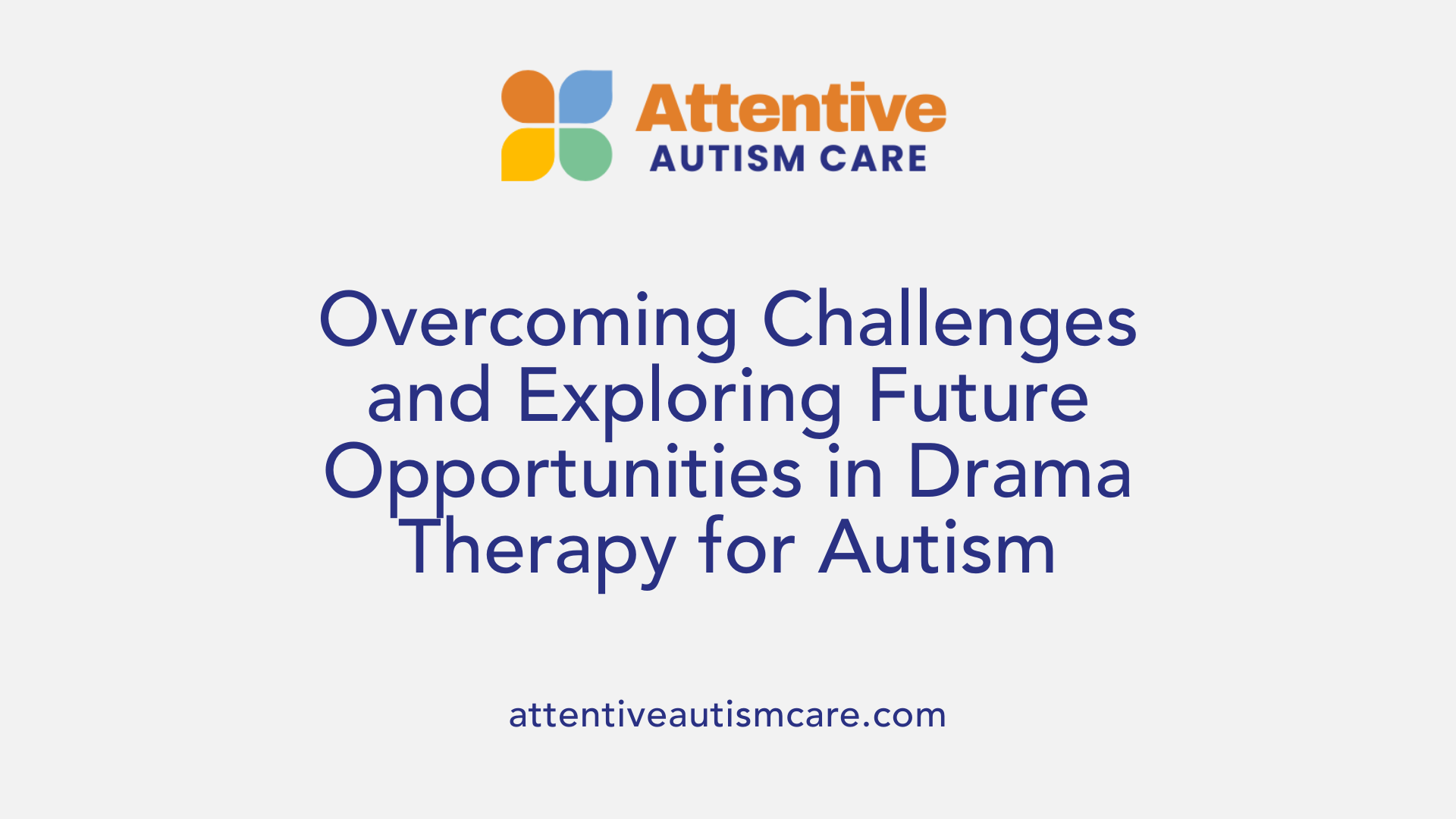
What are the challenges and future needs in the field of drama therapy for autistic individuals?
Despite promising indications that drama therapy can enhance social skills and emotional well-being in autistic individuals, the field faces significant challenges. One major issue is the lack of standardized, formal assessment methods to evaluate the effectiveness of drama therapy programs. Existing studies often vary widely in design and rigor, making it difficult to draw firm conclusions or compare results across research.
Methodological limitations in current research include small sample sizes, diverse intervention approaches, and inconsistent outcome measures. Addressing these issues will require developing uniform evaluation protocols and more rigorous study designs. This step is essential for validating drama therapy’s therapeutic value and ensuring replicable results.
Looking ahead, there is considerable potential for expanding the use of drama therapy as part of broader interventions for autistic individuals. With improved assessment tools and clearer evidence of efficacy, drama therapy could be more widely adopted in clinical and educational settings. Such integration could support greater accessibility to creative and engaging therapies that foster social interaction, emotional regulation, and communication skills in the autism community.
Creative Empowerment: The Transformative Impact of Drama Therapy
How does drama therapy facilitate personal development in autistic individuals?
Drama therapy fosters personal growth by harnessing creative activities such as storytelling, role-playing, dramatization, and improvisation. These techniques encourage autistic individuals to explore and express their thoughts and emotions in a supportive environment, promoting emotional processing and self-awareness.
The use of drama and theatrical arts allows participants to experiment with new behaviors and social interactions within a safe space, aiding adaptation to real-world social scenarios. Through role-play and dramatization, individuals can better understand different perspectives, enhancing their social skills and emotional well-being.
Dramatherapy sessions build therapeutic relationships that facilitate the exploration of personal challenges and encourage the development of constructive coping strategies. By engaging creatively, participants often experience increased self-confidence and improved communication abilities.
Overall, drama therapy supports autistic individuals by offering a dynamic and engaging route to self-expression and behavioral change, contributing significantly to their ongoing personal development and adaptation in social contexts.
Embracing Drama Therapy: A Pathway to Enhanced Lives
Drama therapy stands out as a dynamic and engaging approach to supporting autistic individuals by weaving together creativity, behavioral analysis, and emotional support. Its proven benefits in improving social skills, emotional regulation, and personal growth highlight its value within autism therapy. As research advances and formal evaluation methods develop, drama therapy is poised to become an integral component of comprehensive autism care, offering hope and meaningful change to many.








